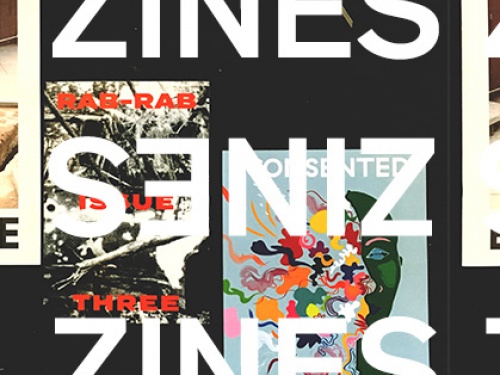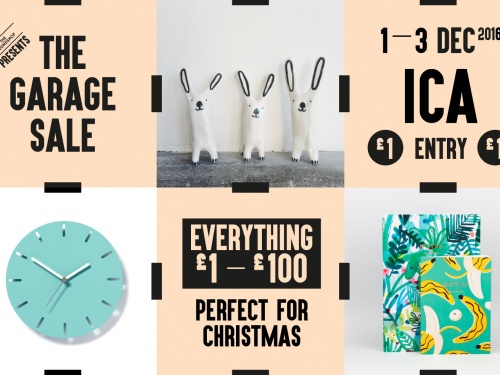Collecting Contemporary Art: Starting a Collection
Starting a collection of contemporary art can be a daunting task. Questions of taste, meaning and even conservation can all become part of what may appear a task reserved for experts only. Today we have an incredible number of artists, not to mention a plethora of commercial galleries and online companies, all offering a bewildering variety of art for sale. The great diversity and pace of today's artistic trends, along with the steady flow of media reports about dizzying prices, can present today's would-be collector with a huge array of options. From sculptures and paintings to posters, from videos and performances to publications, the diverse and eclectic nature of contemporary aesthetics can for many seem frightening, making an objective valuation a tricky task.
The key to successfully start building a contemporary art collection lies in seeing the abundance of choice as a positive and enriching aspect.
The good news is that the art market needs new collectors and they are expected to start small. The first step is to establish a knowledge base and set your personal preferences. Museums, art institutions, non-commercial and prominent art galleries alike are entities one can rely on when getting to know art movements, media, trends, and your own sense of taste. Visiting art exhibitions, art fairs, talks and events is certainly a step towards identifying artists that you have an affinity for. The more you look, the better you will become in spotting the details that characterise iconic works which may rise in value. You will soon find yourself capturing the similarities found in the colour palette of seemingly different works and understanding the shared ideas that contemporary artists refer to in their work. It will help to train the eye, allowing for more than just visual appeal to inform your decision. Many works can be visually stunning, yet it is equally important to assess its originality and artistic intention.
The best art collections are relevant and cohesive. It’s important to build a collection that has а direction. Some collections are built around a specific movement, for example the YBAs or Fluxus; some focus on a medium like photography or drawings or silkscreen prints; some focus on a genre like portraiture or figurative art; and yet others focus on a time frame, the 1970s or 1990s perhaps. These are general outlines, but a popular start is to begin by collecting works on paper: photographs, silkscreens, lithographs or etchings. Following the traditional hierarchy of masterpieces, paper is considered a lesser form than canvas and usually costs much less. The former are usually released in limited editions and are a gateway to starting a collection given their price and easy maintenance.
Another concern for a new collector is usually investment value. To invest in an artist who has already established a good reputation and exhibition record can quickly place one in the realm of six-figures, even for a young artist who may only be a few years out of college. Discovering that your favourite artist is way out of your budget is a very common starting situation. That’s why a mix of original works by emerging artists and affordable limited editions by established artists is a great starting balance. Limited signed edition prints on paper can be less risky and are usually affordable. Smaller editions create rarity and usually confer greater future value to the prints. Also, the lower the number an edition has within the print run will often, but not always, add value. It’s an easy science to master early on. Not to forget, choosing work which is exemplary of an artist's practice usually makes for better value down the line.
Another motivation to start a collection is a desire to support artists and the institutions or non-commercial galleries that identify and develop these artists. By collecting limited editions produced by an institution, one is helping to fund the exhibitions, talks and events. Fledgling collectors are taking their first steps by choosing limited editions produced as part of the ongoing programme at the ICA, which complement the vibrancy and passion that our curators put into their work.
And finally, it is essential for a collector to keep on top of what is going on in the art world by doing research and maintaining a continuous curiosity. Before the financial calculations begin, you should make sure to learn more about the artwork that you find appealing. Find a trusted source to help you understand the virtues of a work, or even better, find a source that also exhibits the artists they refer to. In this regard the ICA can help, as editions are made following their exhibitions and critical readings of the work. Discovering something new is always an exciting process, and more exposure to radical art and culture will likely take one’s aesthetic sensibilities along some unexpected paths.■
Ruta Radusyte is the Assistant Sales Manager – Editions at the ICA.
Follow #ICAEditions on Twitter for updates on new editions and special offers. You can also sign up to receive email notification of new editions.
For a limited period we're offering a 50% discount on our ICA Editions Collections - take a look at our Autumn Sale.
This article is posted in: Articles, Store
Tagged with: Editions, shop, collecting





